
I started researching slow cookers in order to replace mine when I found crazing in the glaze. In the end analysis, this may or may not be a big deal. However, I thought this would be worthy to pass on for those who were unaware of this as I was so you can make your own evaluation.
[Excerpts used with permission of US Wellness Meats: Written by Kelley Herring, Healing Gourmet]
In the 1970s, the electric slow cooker became almost as popular as disco music and pet rocks. As you probably already know, the slow cooker has made a dramatic resurgence in recent years. And it’s not just for their convenience (although that’s still a top selling factor).
It’s also because “slow cooking” is a very healthy way to cook. Cooking “slow and low” in a sealed chamber helps to keep the moisture and the nutrients in your food. It also helps to prevent the formation of cancer-causing compounds – such as lipid oxidation products (LOPs) and heterocyclic amines (HCAs). These dangerous compounds form when certain fats and most meats are cooked at high temperature.
Unfortunately, there is a potential danger lurking in your slow cooker that you may not know about: lead.

The Dangers of Lead
Lead is a neurotoxic heavy metal and a systemic poison that affects every organ in the body.
The medical consensus is that there is no safe level of lead exposure. And while the health risks of lead are great for all of us, they are especially harmful to children, who absorb a higher proportion per body weight and are more vulnerable to its effects.
What’s more, lead exposure is cumulative over time. According to the Mayo Clinic:
“Lead poisoning occurs when lead builds up in the body, often over a period of months or years. Even small amounts of lead can cause serious health problems.”
So while one serving of food prepared using contaminated cookware won’t kill you, over the years, it could lead to lead poisoning. In adults, lead poisoning is linked to a wide number of neurological problems. In children it is linked to:
• Learning disabilities
• Developmental delays
• Lower IQ scores
And what’s more, lead poisoning is often “silent” with no obvious symptoms.
Is Your Slow Cooker Leaching Lead?

In 2004, Bill Gebhardt of Salt Lake City’s KUTV investigated the lead content in a number of kitchen tools, including slow cookers. In his investigation, he took a number of slow cookers to the Data Chem Lab in Salt Lake where they were analyzed for lead.
Crockpot inserts (what you put your food into), are most commonly made of glazed ceramic, which has a reputation for leaching lead. His analysis found that 20% of slow cookers were leaching measurable amounts of lead into food.
When ceramic vessels are heated to just 80 degrees Fahrenheit, they release ten times the amount of lead than they do at room temperature. And slow cookers heat up to more than 250 degrees Fahrenheit.
While temperature is part of the equation, time and acidity also impact lead-leaching. This means that acidic ingredients like vinegar, tomatoes or citrus, as well as longer cooking times will cause more lead to be released from the vessel and into the food.
From the reports available on the topic, most of the lead leaching is believed to come from the glaze – the smooth, often brightly-colored coating on the inside of the slow cooker vessel. This is because lead compounds, such as lead oxide, have historically been used in glaze formulations.
A vast majority of slow cookers state that their products do not contain leaded glaze or that their slow cooker is in accordance with government guidelines for lead (the FDA Compliance Policy states that leach levels of 1 mcg/mL are acceptable for large vessels such as slow cookers).
However, these levels do not necessarily infer safety. Nor is this level indicative of the actual leaching that can occur with normal cooking and the variables of time, temperature or acidity of ingredients.
Many other companies purport that their product is “safe” as long as there is no cracking, chipping or haziness of the glaze. But that isn’t a very reassuring statement given the fact that micro-fissures are undetectable to the eye and lead is a systemic poison with cumulative effects.
And to balance this post, there is conflicting information in this post: Can Your Ceramic Cookware Give You Lead Poisoning? Crock-Pot lovers, please don’t be upset with me! I am not trying to be an alarmist.
And how about unglazed inserts? These too can pose an issue as lead is naturally found in all ceramic materials and clay.
So, (Keep in mind, “meets FDA guidelines” does not mean it is free of lead, and “lead free” only means that it does not contain “extractable” lead.)
Slow Cooker Brands and Lead Contamination
Recommendations:
1. VitaClay: Clay pots made by VitaClay are manufactured using organic Zisha clay. Zisha is an extremely pure clay. Most risk of lead contamination comes from glazed ceramic dishes and pots. The Zisha clay pots are unglazed and have been certified by an independent third party lab as lead-free (test results here), exceeding the FDA, CA 65, and UL safety requirements. If the clay pot chips or breaks for whatever reason, it can be easily replaced without buying a whole new cooker. Clay pots are very resistant to damage, by the way, so the chances of this happening are low.
2. Instant Pot IP-DUO60 7-in-1 Slow Cooker, 6Qt 3-ply bottom Food Grade 304 (18/8) stainless steel cooking pot completely lead-free. 4.5 star rated by 8,022 reviewers. #1 Best Seller. The video shows it all in detail………………………..>
3. 360 Cookware Gourmet Slow Cooker and Stainless Steel Stock Pot: Food Grade Stainless steel completely lead-free. 4.5 star rated by 83 reviewers. Very beautiful but very expensive.
4. Precise Heat 12-Inch Surgical Stainless Steel Deep Electric Skillet/S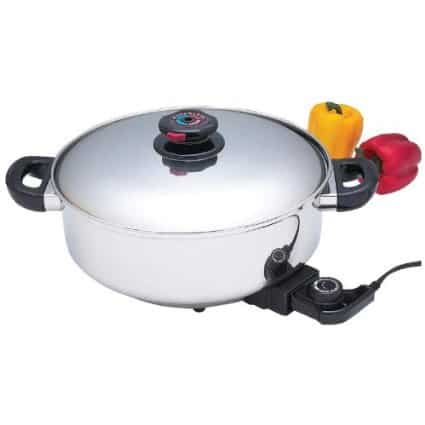 low Cooker: Insert is surgical grade stainless steel and lead-free. Full 5 star rated in reviews ………………………………………………..>
low Cooker: Insert is surgical grade stainless steel and lead-free. Full 5 star rated in reviews ………………………………………………..>
Companies you’ll have to take their word for it:
- Proctor Silex: States there is “no lead or cadmium in the crock”.
- KitchenAid: States their slow cooker glazes are lead-free.
- Crock Pot & Rival: States their product meets FDA guidelines for lead.
- Cuisinart: States their slow cooker glazes are lead-free.
- Hamilton Beach: “Satisfy FDA heavy metal requirements”.
- West Bend: “Glazes are inspected for maximum allowable amounts of trace elements in accordance with the United States Food and Drug Administration’s guidelines. If the glazes are chipped or cracked, the vessel should not be used.”
Prop 65 and Lead Contamination in Slow Cookers
While the FDA guidelines (and even individual companies) are unhelpful in regards to determining how much lead your slow cooker may be leaching, California Prop 65 – The Safe Drinking Water and Toxic Enforcement Act of 1986, can provide additional clarity on this murky issue.
With Prop 65, you can determine if your slow cooker leaches more than 0.1 parts per million of lead (this is 10 times LESS than the FDA limit of 1.0 ppm or 1 mcg/ml).
An easy way to find out if your slow cooker is subject to Prop 65 labeling? Check out Amazon to look under the “Product Details/Information” section. If the item has a Prop 65 label, there will be a statement:
“California residents: click here for Proposition 65 warning.”
While this provides an added layer of protection from what the FDA mandates, unfortunately, amounts of lead even below the Prop 65 limit of .1 ppm can be measurably harmful (especially for developing fetuses and children).
How to Protect Your Family from Lead Exposure
In this day and age, there are many potential hazards in our food supply and cookware.
Tamara Rubin (Lead Safe Mama) says that testing for lead is a waste of time. You CANNOT use a LeadCheck swab to test your CrockPot liner for Lead. The Lead levels are far below the detection limits for the swabs. Many bloggers have suggested this in their posts about Crock Pots and this is simply a waste of your money. You can read more about that here.
Here are 3 ways you CAN help protect your family from lead exposure:
1. Go Inert: Opting for tried-and-true inert cookware – including glass (like Pyrex), stainless steel, cast iron, and enameled cast iron. Always do your research before purchasing.
2. Avoid “Made in China”: Do not buy glazed plates or cooking items that come in contact with food that are made in China – they have less regulation on chemical contamination.
Helpful read: What’s with China and Lead Poisoning?
3. Detox Naturally: Detoxify from aspartame AND heavy metals with this protocol.
Kelley Herring is author of more than a dozen books on nutrition and natural healing. She is also the co-founder of Wellness Bakeries, which has just released their newest product – Better Bread – a 100% Paleo bread mix you can whip up in 5 minutes flat.
***For the Full Spike Protein Protocol (including NAC) to protect from transmission from the “V” and to help those who took the “V”, go here.
Deep Roots At Home now has a PODCAST! We are covering everything from vaccines, parenting topics, alternative medicine. Head over today and like, share and download a few episodes! https://buff.ly/3KmTZZd
I’m still on FB but shadow-banned hard… If you want to stay connected, here is one way…
Censorship is real. My Pinterest account was just suspended; surprisingly, part of my main board is still available through this link, and it scrolls down a long way so all is not lost! BEWARE of the promotional ads in there! They are not placed by me. Pinterest now sells space in boards for these ads, and Temu is a scam. Do not click on them!
You can also find me on Instagram, MeWe, and Telegram.
And please join me for my FREE newsletter. Click here.
©2024 Deep Roots at Home • All Rights Reserved


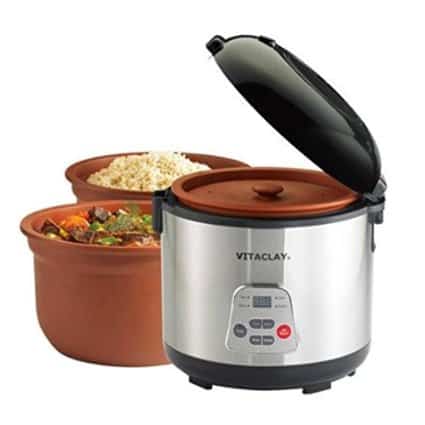
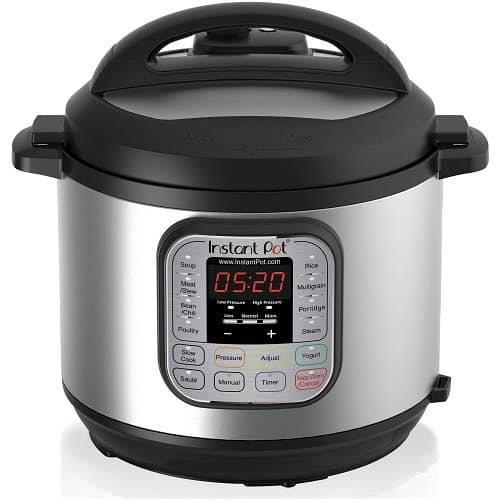



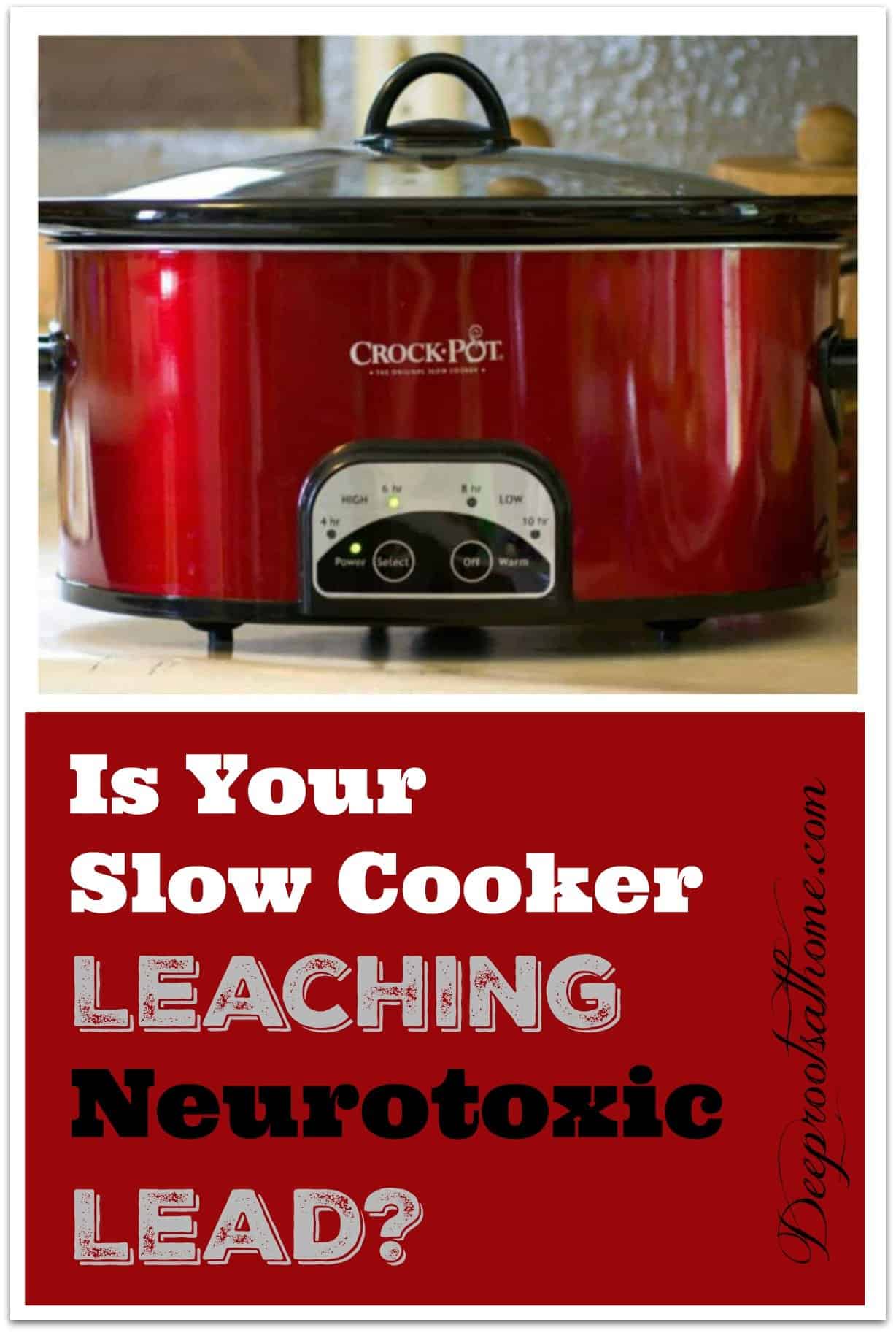

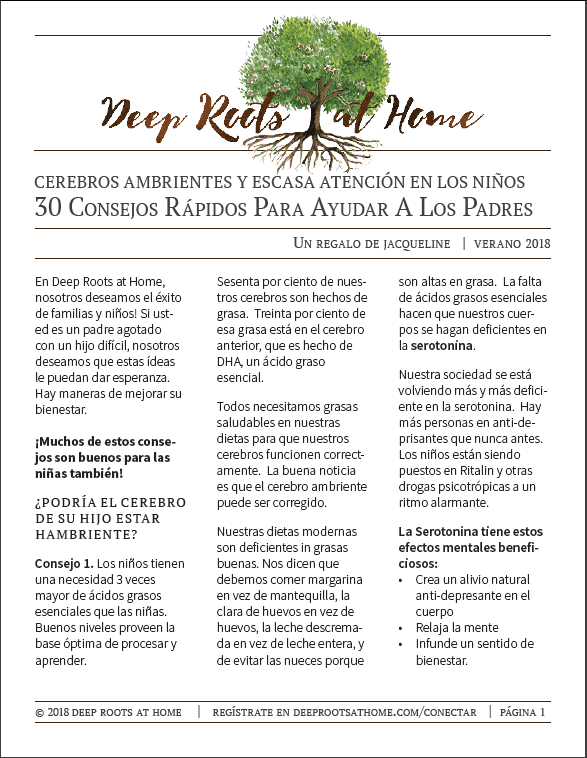


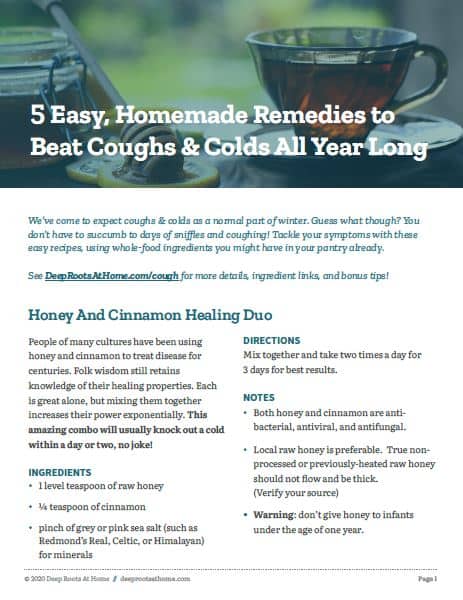
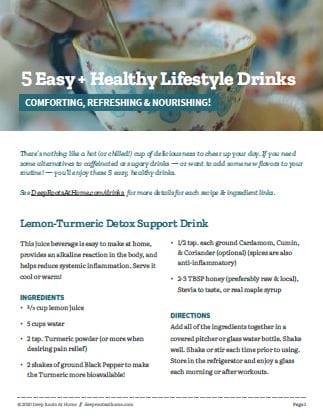
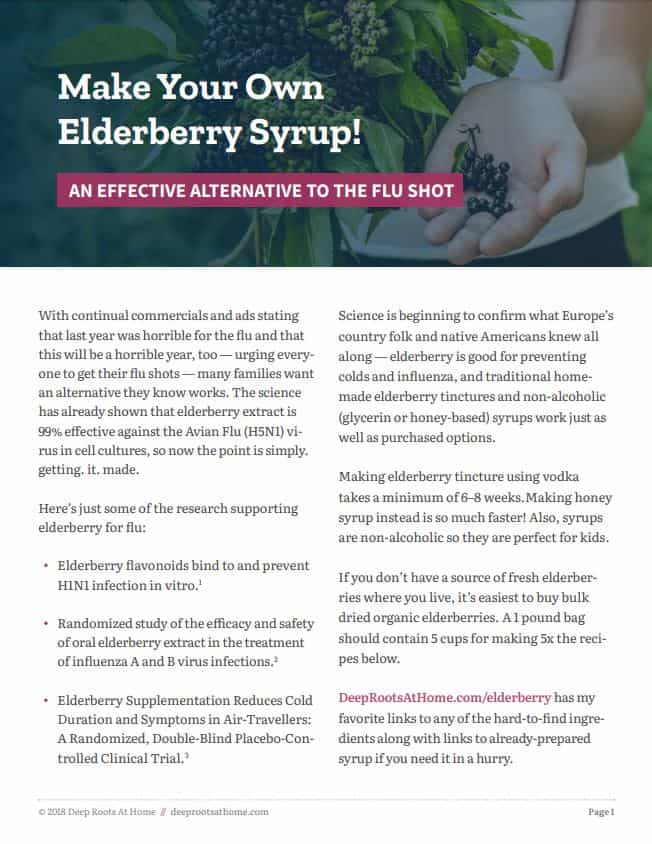



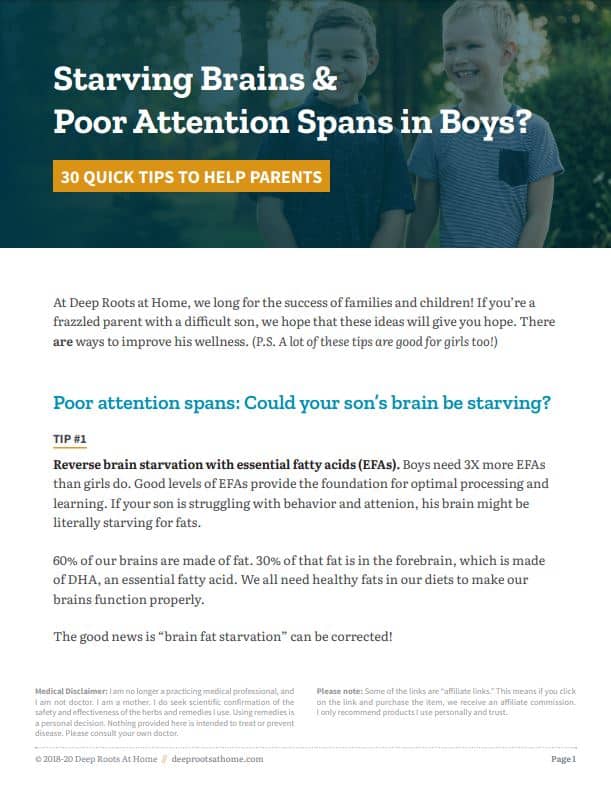


Laurie Packard
Does it help if you use a slow cooker liner? My crock pot is very cracked, but I have been using it for years. I mostly (unless I am out of them) use liners to make clean-up easier.
Jacqueline
Laurie, again (alas!) I bear bad news…the plastic (often nylon) liners that people use in their crockpots concern me as well – I avoiding heating plastic since it leaches endocrine (hormone) disruptors into food…also, if the food is acidic.
It is hard writing a blog post like this 🙁
I hope that helps…
Elizabeth Morgan
Very insightful! Never thought I’d have to worry about my crock pot having a lead problem. We have two of them from the Crock Pot brand. I’ll keep my eyes on its condition.
Janet
I had a hankering for buying old pottery dishware and discovered that I could buy the lead sheets right at my local ACE Hardware store to check their safety for use. I also learned that eating a meal off of a plate containing lead would probably not be an issue, once in awhile, but to definitely not store food, especially acidic food for more than 24 hours in any lead-containing dishes as that’s when they’d leach the most. I never thought to check my modern crockpot, so that’s something I’ll do as soon as we’ve finished the meatballs that are being stored in it, in the fridge!
Jacqueline
Janet, thanks for that information. I too used to collect old pottery and we did use them to food for a time. Now I display them on the wall. Sad but still pretty for decor!
Kari
Instapot has a slow cooking feature and is all stainless steel. Problem solved.
Jacqueline
Yes, Kari!! I love what I’ve seen of the InstaPot! Thanks for that!
Charlotte Moore
I would never have thought anything would be wrong with a slow cooker. I need to check mine and see what make it is. Such a shame to have to worry about so much bad stuff. Especially for the children.
GOD BLESS!! Thanks for allayer hard work bringing so much info to us.
Jacqueline
Hi, Charlotte!!!! You are such a faithful friend to me <3 It is a shame I feel the need to write about troubling things sometimes. It makes me sad for us all that we have to. We have had such sickness in our family and I just need to know what to do to help keep our immune systems healing. I think some of us moms do better finding out and fixing these things than worrying and not knowing 🙂
I pray you have a great week and keep looking to Jesus!! <3
Charlotte Moore
Oops!! Thanks for all your hard work. HA!!
Marge Sweigart
Oh my goodness! I’ve never given it a thought. I have a crockpot that was given to me as a bridal shower gift back in the 80’s and I use it probably once a week. Do you know if the older ones are any more likely to have lead? Wouldn’t surprise me if they did.
And I have another slightly newer one that I use occasionally. Both are Crockpot brand. I’m definitely going to need to test them. Thanks for the heads up!
On the bright side, I gave two of my daughters the exact same model of the Instant Pot this past Christmas. I guess I can feel good about that!
Jacqueline
Yes, Marge, the Instant Pot is I think about as safe as you can get…good choice!
Mak
Indeed ceramic and teflon are bad news for food preparation. Titanium is inert. It is used in hip replacements and tooth implants for this reason. We don’t absorb it. It does not leach. You actually don’t need another kitchen gadget to take up counter space. You can use the large soup pots from Titanium Cookware Collection, with the lid, just as you would a slow cooker, but without any worry of anything leaching from it. They have a 9.5 Quart pot that I use for my bone broth and so on.
Jacqueline
That is really helpful, Mak! I love the idea of using a stock pot (with a thick base to prevent burning) on a very low simmer for hours anyway. And with little counter space it makes so much sense! 9.5 qt. is a wonderful size! Thanks!
Rose Martine
“Greetings! Very useful advice in this particular article!
It is the little changes that make the largest changes.
Thanks for sharing!”
Rose Martine
I like the helpful info you provide in your articles. I will bookmark your weblog and check again here frequently. I’m quite sure I’ll learn plenty of new stuff right here! Good luck for the next
tanya
thanks so much for this piece, jacqueline. i’ve been referring to it regularly lately as i look to replace my traditional crock pot with something as lead free as possible. so i wanted to ask — any reason why you didn’t include crock pots with stainless steel inserts as a viable option? because that would eliminate any prospect of lead entirely, yes? since you’ve researched this FAR more than i have, i thought it would be wise for me to check in with you re: that option before finalizing my purchase. thanks again for all the time and insights you’ve offered here. super helpful.